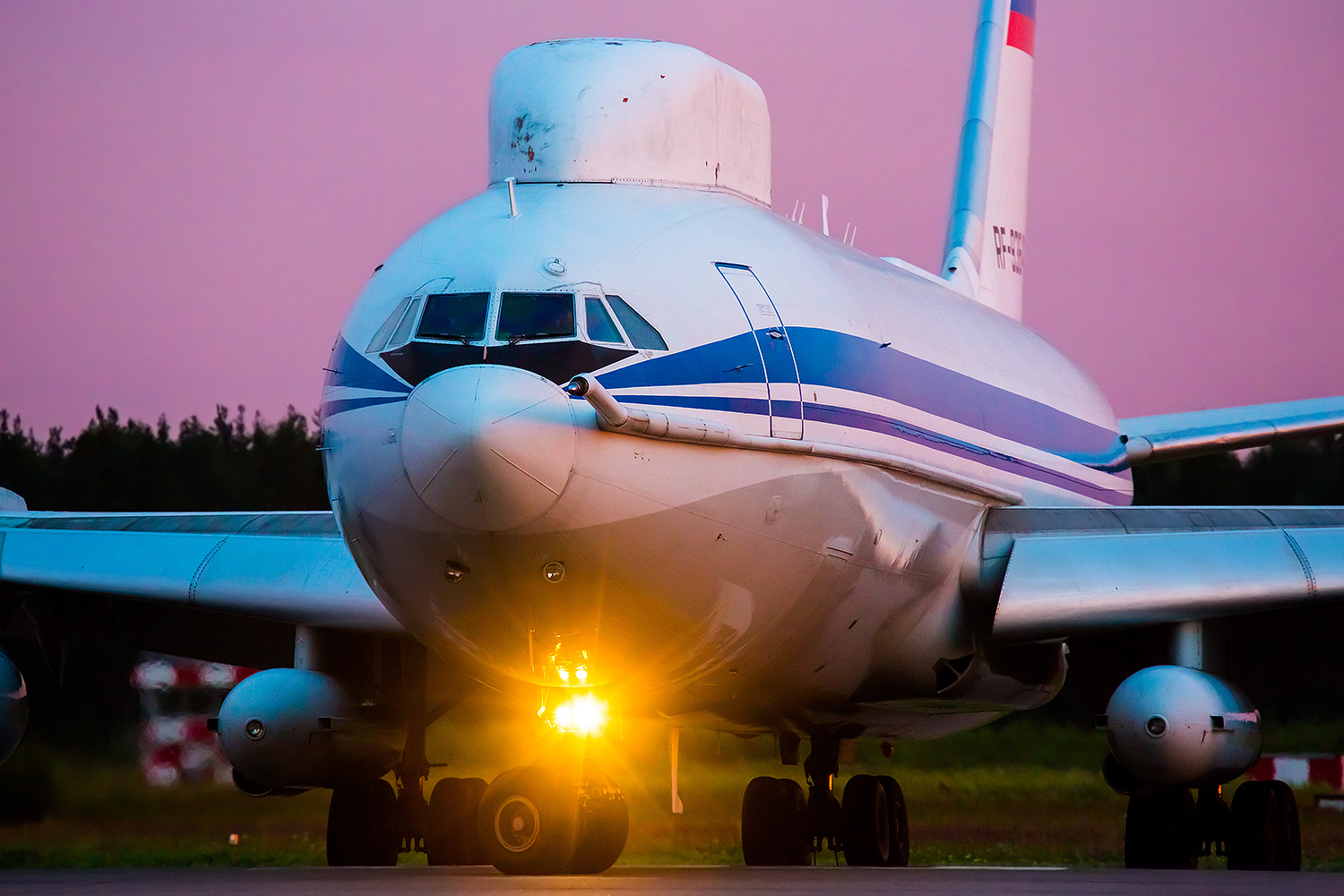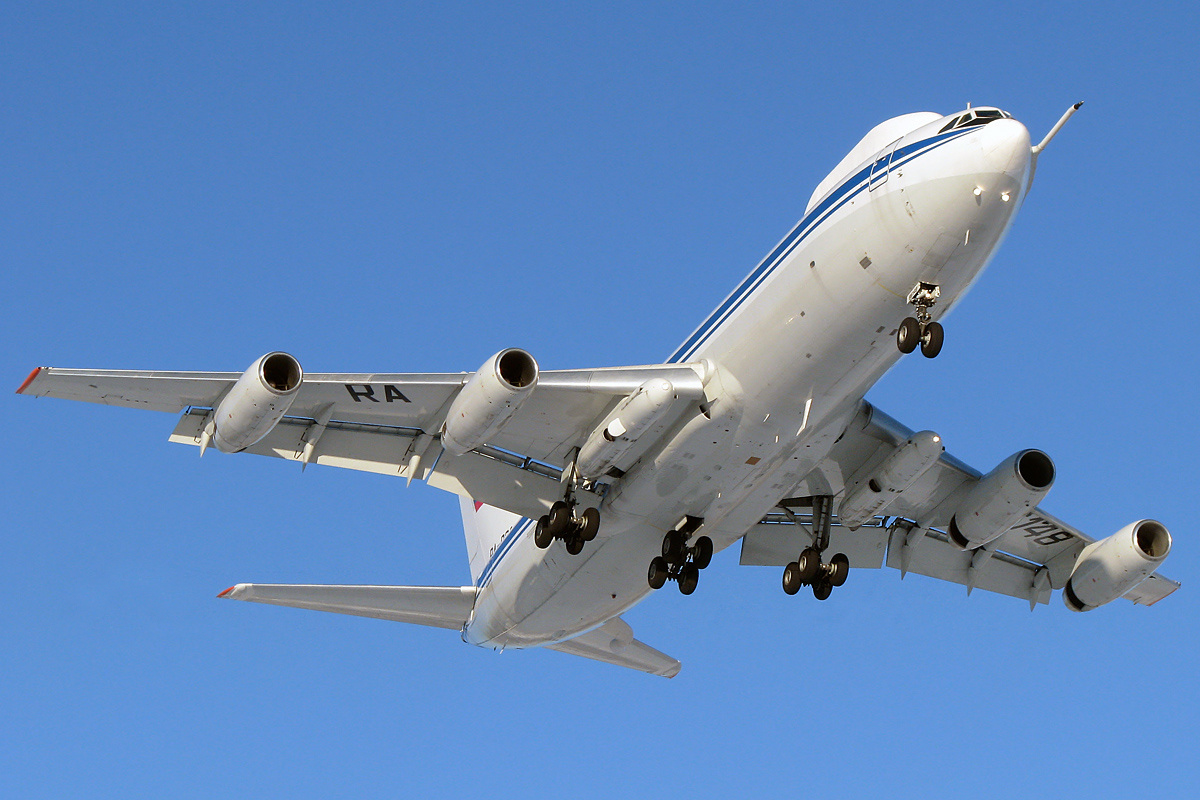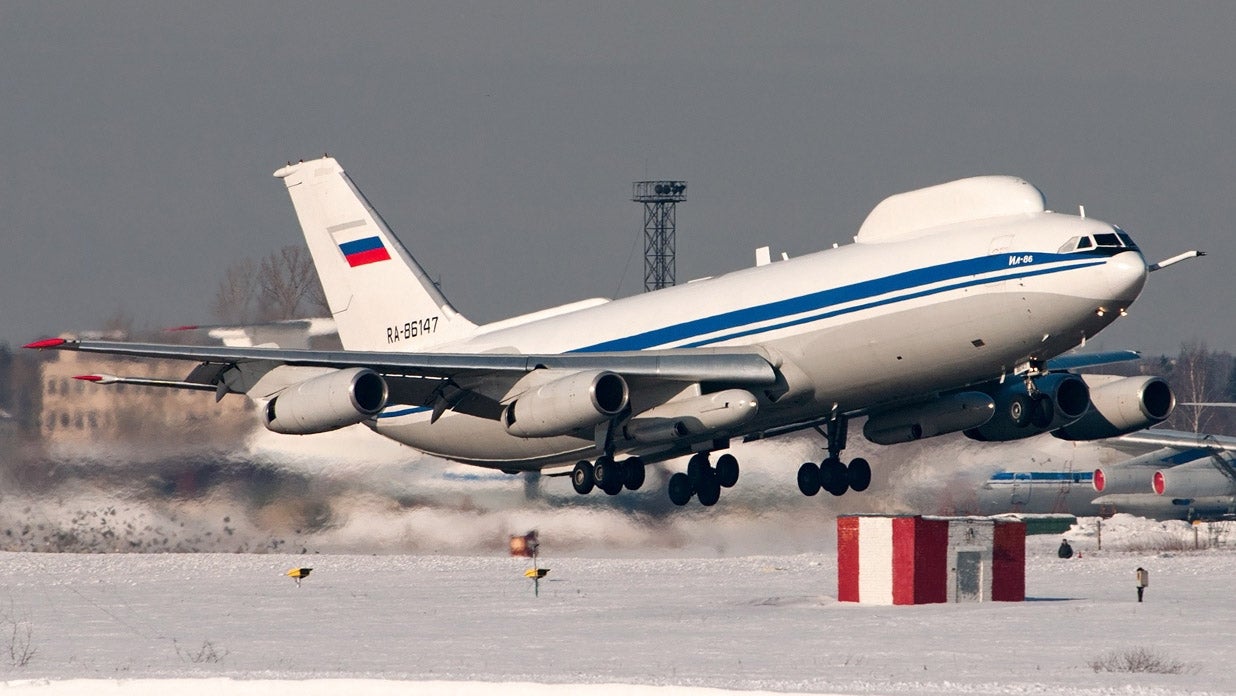In what seems like a remarkable breach of security, unknown thieves have helped themselves to equipment from inside one of the Russian Aerospace Forces’ rare Il-80 Maxdome “doomsday aircraft.” The converted airliner, which plays a role analogous to the U.S. Air Force’s E-4B, as a strategic airborne command post in time of nuclear conflict, was at an airfield in southwest Russia when the caper took place.
While it is not clear exactly when the raid was carried out, the incident was reported today by Russia’s state-run media outlet RIA Novosti. According to their story, the Il-80 was undergoing maintenance when “unknown persons opened the cargo hatch” and stole what is described as “radio equipment.”
The fact the aircraft was receiving maintenance, and that this was taking place at an airfield in the Rostov region, points to the incident having occurred at the facility of the Beriev company at Taganrog, on the Sea of Azov.
As well as being an aircraft design bureau and manufacturer, specializing in amphibious aircraft, Beriev is responsible for outfitting and upgrading equipment in several different special mission aircraft operated by the Russian Aerospace Forces.
Furthermore, the RIA Novosti report mentions that the police have spoken to a representative from the Beriev company, according to an unnamed official from the transport department of Russia’s Interior Ministry in the North Caucasian Federal District, in which Taganrog is located. The spokesperson from the Interior Ministry confirmed that an investigation is now underway.

The Maxdome fleet is normally based at Chkalovsky, near Moscow, alongside Il-82 communications relay aircraft. Here, they are assigned to a specialist airborne command post unit that’s subordinated to the National Defence Management Center of Russia’s General Staff. Four examples of the Il-80 are in service.
In the event of a full-scale war, the Il-80 would be mobilized to transport the Russian President, who, during peacetime, relies on a civilian organization, Rossiya, for his aerial transport. Unlike the presidential aircraft in the Rossiya fleet, which are essentially VIP versions of standard airliners, the Il-80 is more comprehensively protected against the effects of a nuclear detonation and is a fully integrated part of the command system of the Russian nuclear forces. As such, from his suite onboard the president is able to order the launch of intercontinental ballistic missiles, from land or sea, or make other critical warfighting decisions.
The centerpiece of the Il-80’s mission suite is known as Zveno-S and includes an advanced communications suite, satellite antennas for which are carried in an enormous canoe-shaped fairing above the forward fuselage. Two large underwing pods each carry a turbine engine that serves as an additional power supply source for the onboard equipment. Numerous other antennas and fairings are littered around the fuselage, with a different configuration on each of the four aircraft. A pod fitted on the port side of the rear fuselage contains the Fregat trailing wire antenna, a very low frequency (VLF) system for communications with submerged ballistic missile submarines, in much the same way as the U.S. Navy’s E-6B Mercury.

First flown with its full equipment suite in 1987, the Il-80s are now somewhat long in the tooth, and an upgrade program was launched in 2008, introducing the improved Zveno-2S system. Details are next to non-existent but it is known to have been installed in at least two aircraft since then and it’s possible that the Maxdome that fell victim to thieves was undergoing the same work.
There is also another, potentially separate, modernization program that may have resulted in this particular Il-80 being sent to Taganrog. In May 2019, it was announced that Russia plans to enhance its Il-80 and Il-82 aircraft, and that experimental design work on the project was complete.
“We have started modernizing airborne command posts based on the Il-80 and Il-82,” said Russia’s Deputy Minister of Defense Aleksey Krivoruchko, at the time. “The [Polyot Research and Production] Enterprise is the chief developer of the onboard communications and control system and has successfully wrapped up its experimental design work on its upgrade.”

Since Polyot, based in Nizhny Novgorod, is the company that was originally responsible for developing the Zveno-S, and presumably also the Zveno-2S, communication suite, it is also possible that the modernization program mentioned last year is simply a continuation of the previous Zveno-2S upgrade.
Not surprisingly, the type of “radio equipment” stolen from the Il-80 at Taganrog has not been disclosed. There has been some speculation that the equipment may simply have been taken for its scrap value. However, even if the theft concerns less-sensitive items, the fact that intruders entered this aircraft — a strategic asset that is key to the nation’s nuclear deterrent — in the first place, is a cause for alarm. It also raises more questions about the security standards at Russian air bases, especially those that are dual-use, with military and civilian applications.
Since it was undergoing maintenance at the time, it’s possible that the most critical items for the aircraft’s nuclear warfighting mission may have been removed, or at the very least secured from prying eyes. Nevertheless, the interior of the Il-80 has apparently never been seen by the public. While the break-in might well not have put Russia’s strategic command structure in peril — this aircraft was not at readiness, or in any kind of normal operation — the very fact that unauthorized persons made it onboard must be a cause for serious concern.
Contact the author: thomas@thedrive.com
